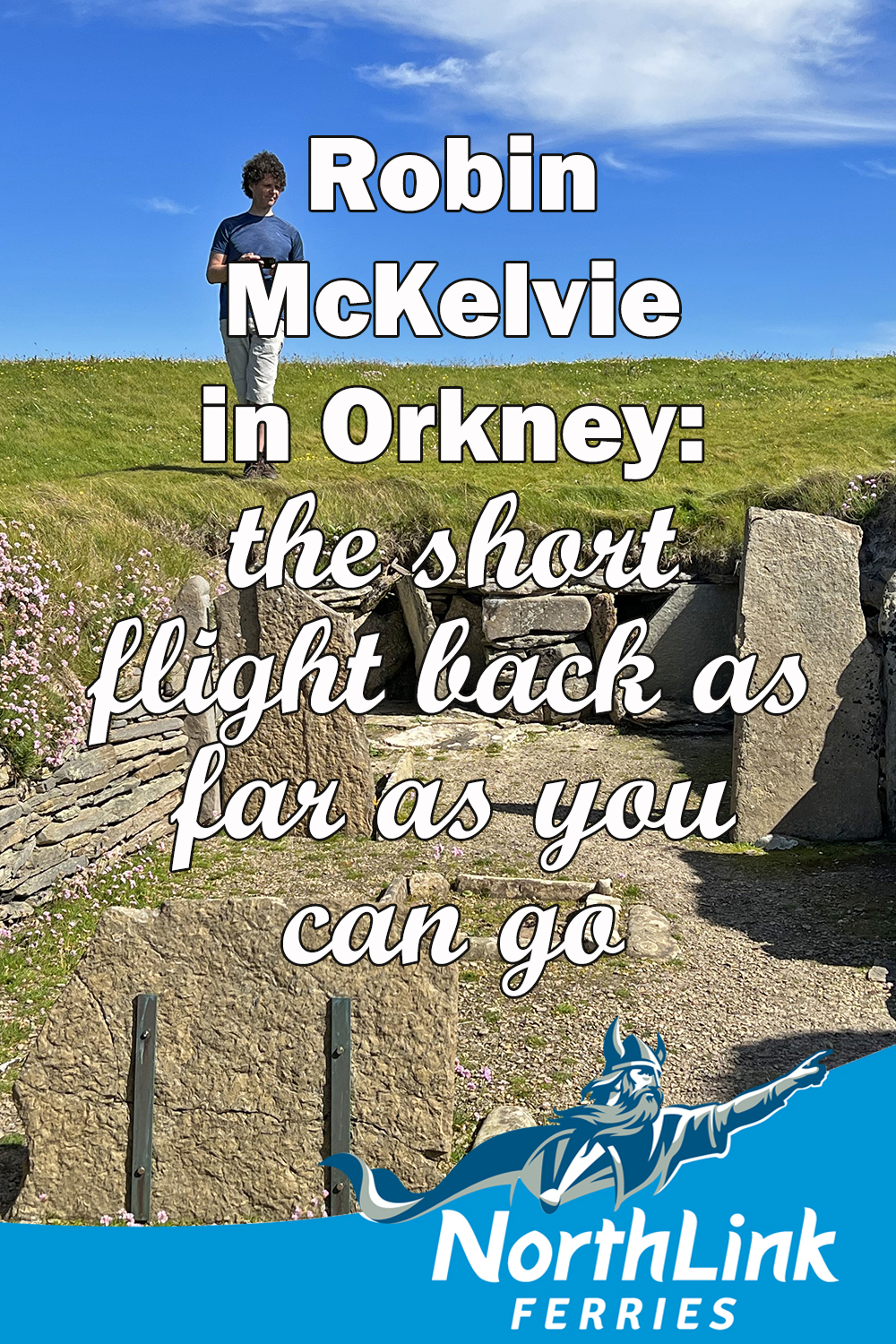Robin McKelvie in Orkney: the short flight back as far as you can go
The Orkney mainland’s Neolithic treasures, including the likes of Skara Brae, are centuries older than Stonehenge. Wee Papa Westray in the north of the Orkney Islands is a jaw-dropping half a millennia older than Skara Brae!
The Knap of Howar may be up to half a millennia older than the Orkney mainland’s Skara Brae, making it one of Europe’s oldest Neolithic sites.
Welcome to a truly remarkable island that we’re just about to bounce down on to now we’re on the world’s shortest scheduled flight.
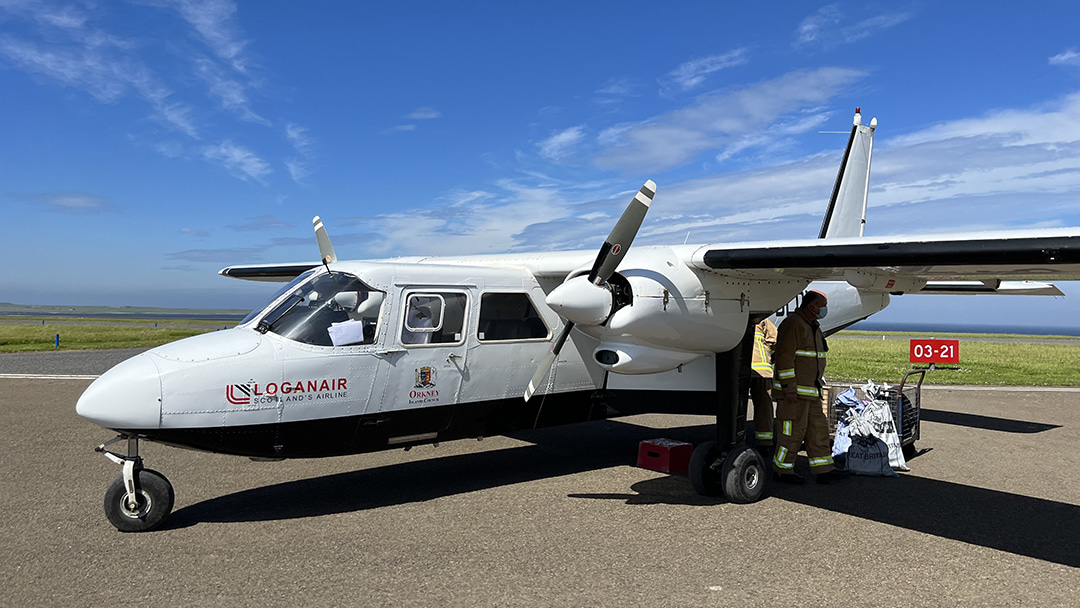
“We’re going to use the cross-runway today,” smiles my pilot after take-off from Westray. Before I have time to ponder what this can mean at an ‘airport’ with surely only one tiny runway, we skim down over a stone wall painted with aviation stripes and thud down on the turf. Then we bounce over the runway and – finally – come to a stop before we reach the stone wall on the other side of the runway. It’s a fittingly dramatic introduction to an island that always brings joy, frequently surprises and never bores.
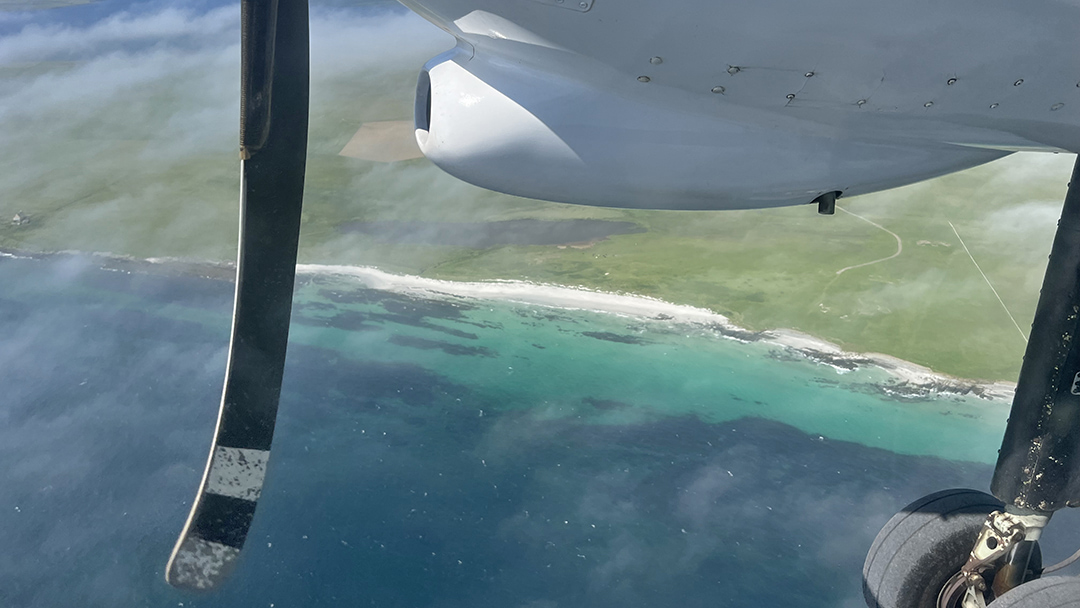
Papa Westray is like a real life Treasure Island, the sort of place I dreamt about one day escaping to when I was a wee boy being brought up in a council house in provincial Scotland. Papay – as the islanders usually refer to it – is only four miles long and not even a mile wide.
I’m desperate to get out in search of that Neolithic treasure, the oldest stone dwelling in northern Europe, but first check into my cute wee wooden wigwam at Papa Westray’s trim community-run hostel. It lies just a short stroll from the landing strip. Warden Jennifer couldn’t be more friendly. I ask her if she has any bread. Not only do I leave the hostel’s wee shop with bread and gorgeous locally smoked salmon from just across the water on Westray, but I snare an invite to celebrate Johnsmas. Tonight.
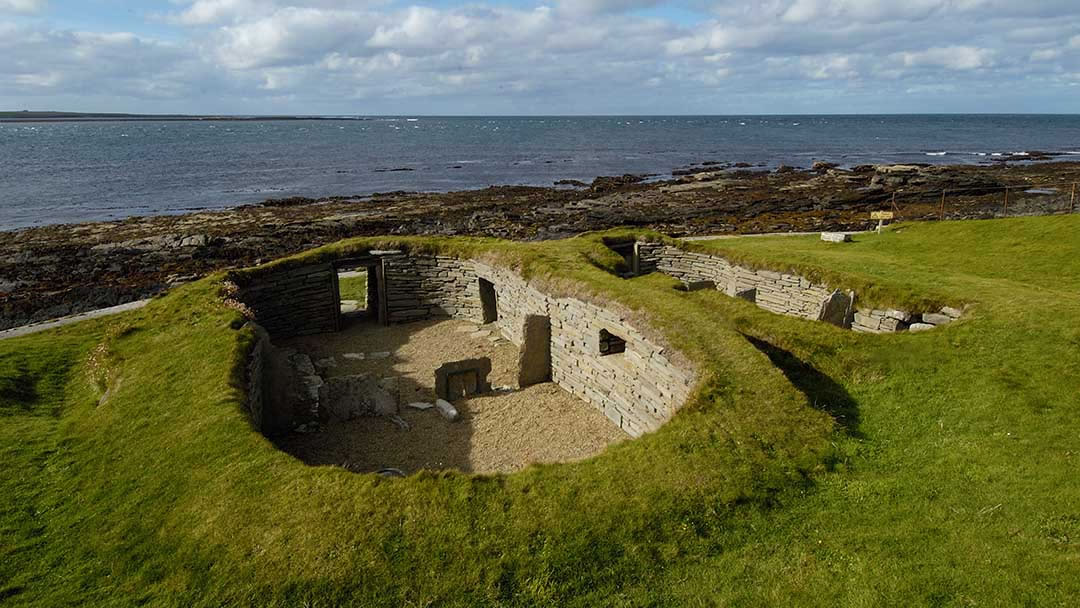
I better get a move on then, so stride out for the Knap of Howar, which carbon dating in the 1990s indicated may be up to half a millennia older than the Orkney mainland’s finest, making it one of Europe’s oldest Neolithic sites. I yomp down towards the coast, following the sound of the sea and the squawking gulls. All sounds ebb away as I draw in a deep breath on sighting the Knap Of Howar. I’ve been a writer for over two decades, but all I can mouth is ‘wow!”.
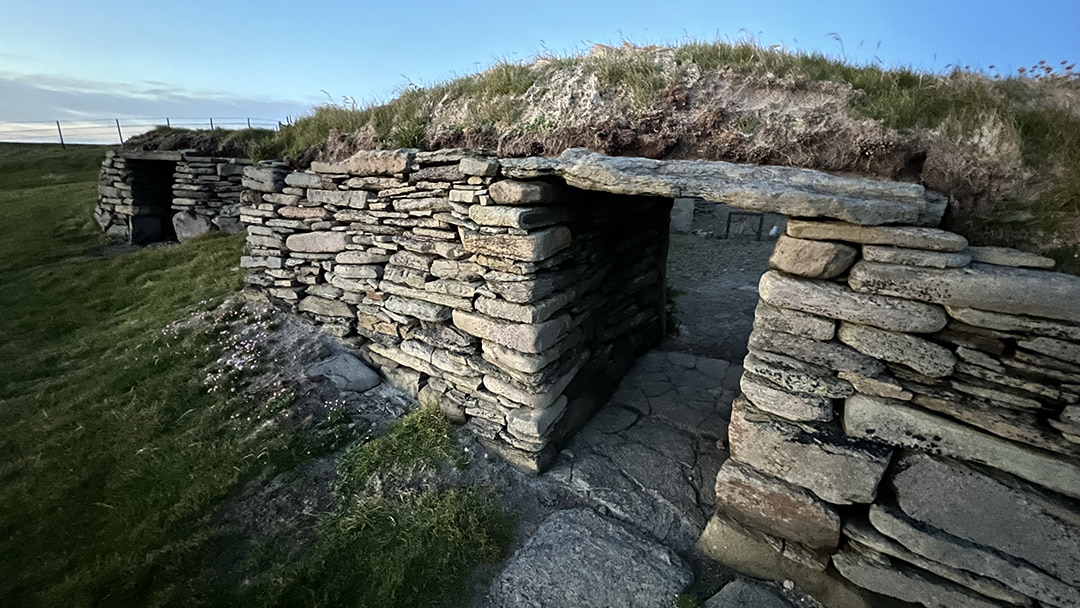
That is I reckon the right response to the Knap of Howar. This brilliantly preserved farm dwelling dates back to almost 4,000 years BC. It is so well preserved that it instantly hurtles you back down through the centuries like a sturdy stone time machine. It stops spinning in my head and becomes gloriously real when I slip under the mantle into a room almost 6,000-years-old.
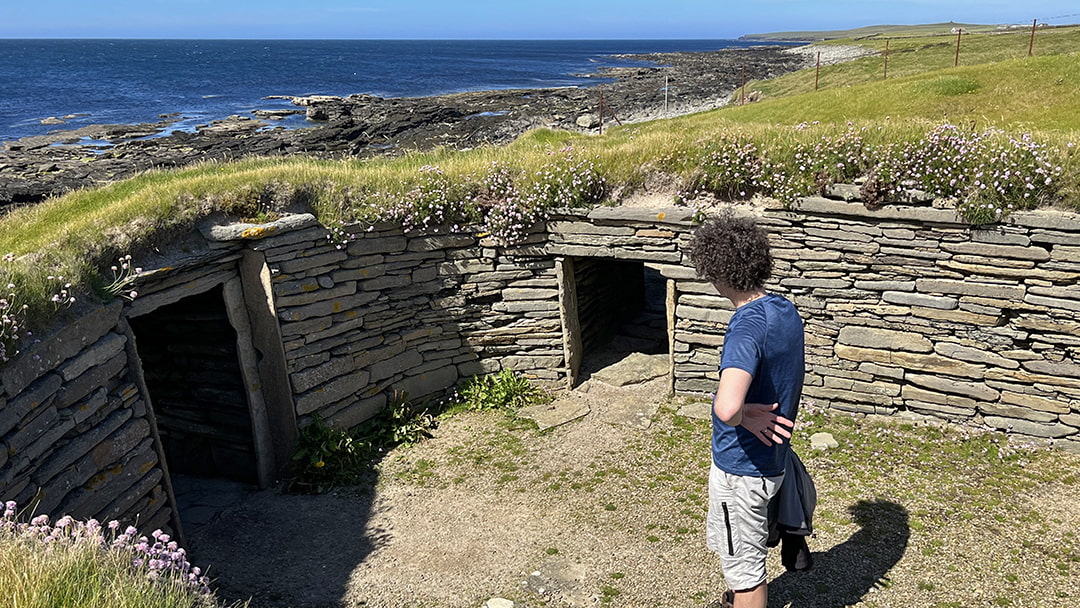
It’s like being a character in Outlander, feeling like I’ve been transported in an instant. I can make out armchairs where Neolithic men and women would have once sat by a hearth that is also visible. I can see where they would have slept too, drawing an intimate portrait and connection in a way no museum ever can.
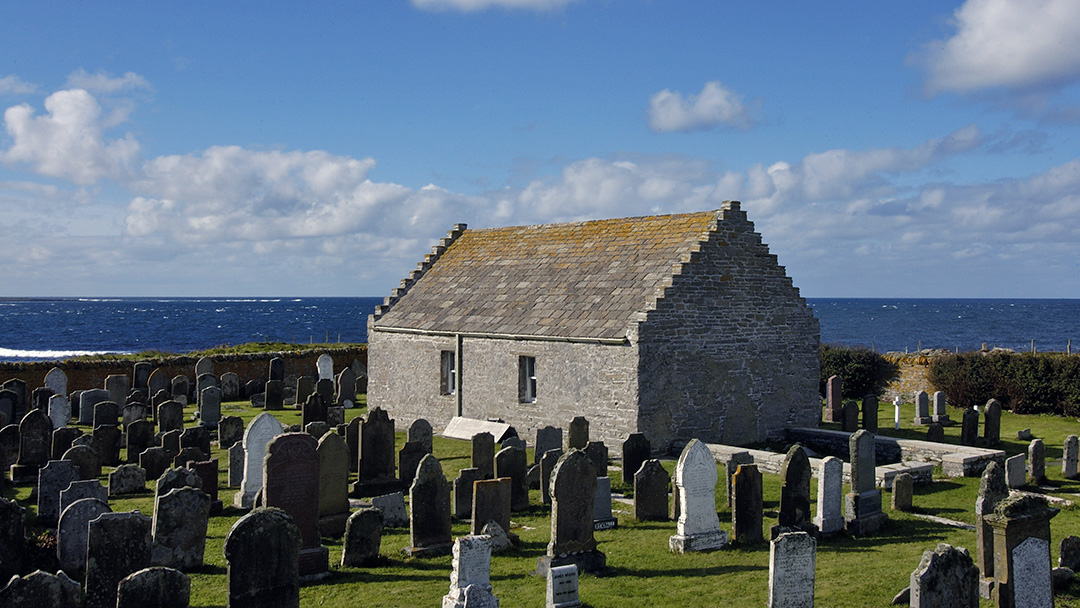
The Knap of Howar is not alone, not in terms of historical sites on Papa Westray’s wild west coast. Its neighbour is St Boniface Kirk. This would otherwise be the island’s main attraction as it’s actually one of the oldest churches in Northern Scotland still in use. This religious edifice swirls back as far as the 12th century, but fell into rack and ruin by the 1930s. The community – and there is a huge sense of community on Papa Westray – came together and worked some new techniques into traditional construction methods to brilliantly bring the church back to life. I lose an hour just taking it all in; another half hour in the graveyard with its 12th-century Viking hogback gravestone.
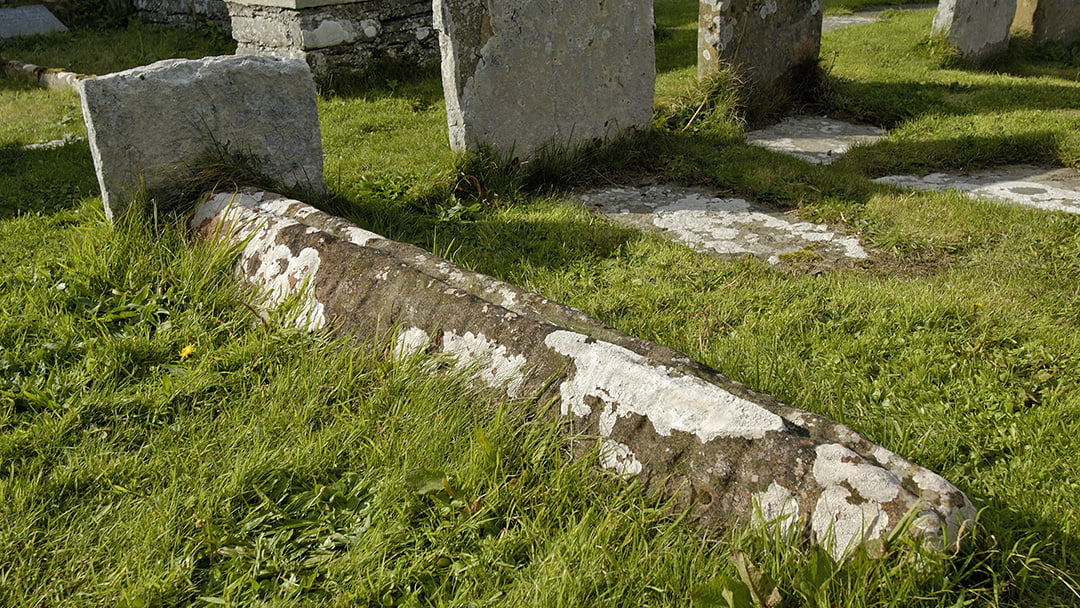
Papa Westray and her rich historical legacies won’t let me go just yet. Pushing towards the beach I find another site. A scramble of Neolithic ruins have been in part reclaimed by the sea, but enough remains to get a window into a world dramatically different, but also similar to ours. I stand thinking of my ancestors who would once have eked out a living here. Back then the only sounds would have been the roar of the surf and the calls of the seabirds. Nothing has changed.
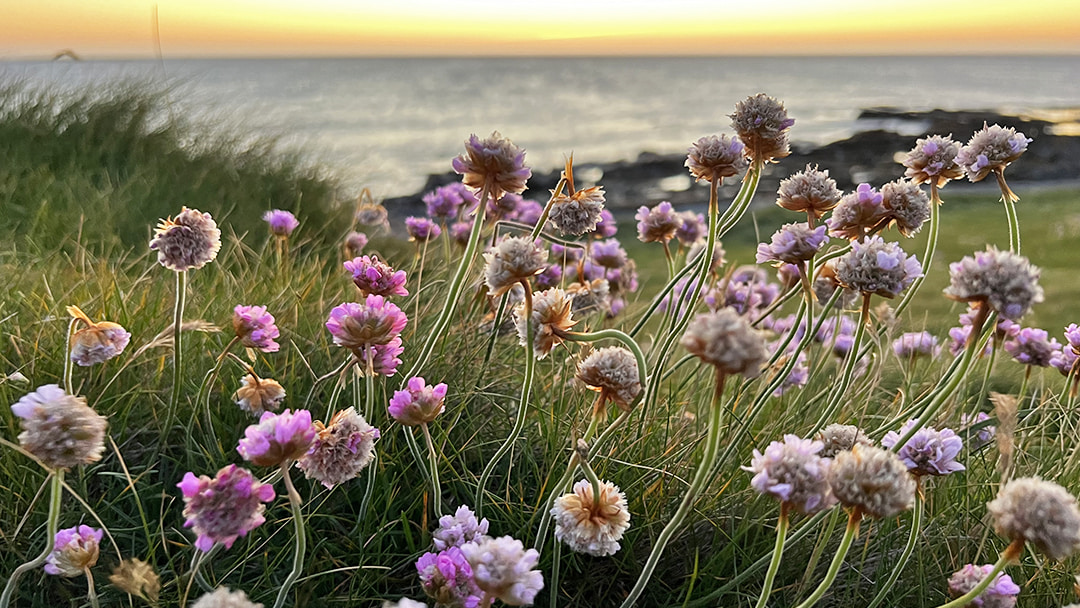
Starstruck by Neolithic delights I wander across the island to find a sprinkling of more modern dwellings. It’s tempting to fetishise Scotland’s smaller isles, to see them as somewhere so remote, empty and isolated as to not be real places, places not populated with real people leading real lives. I see this in travel articles and on TV too.
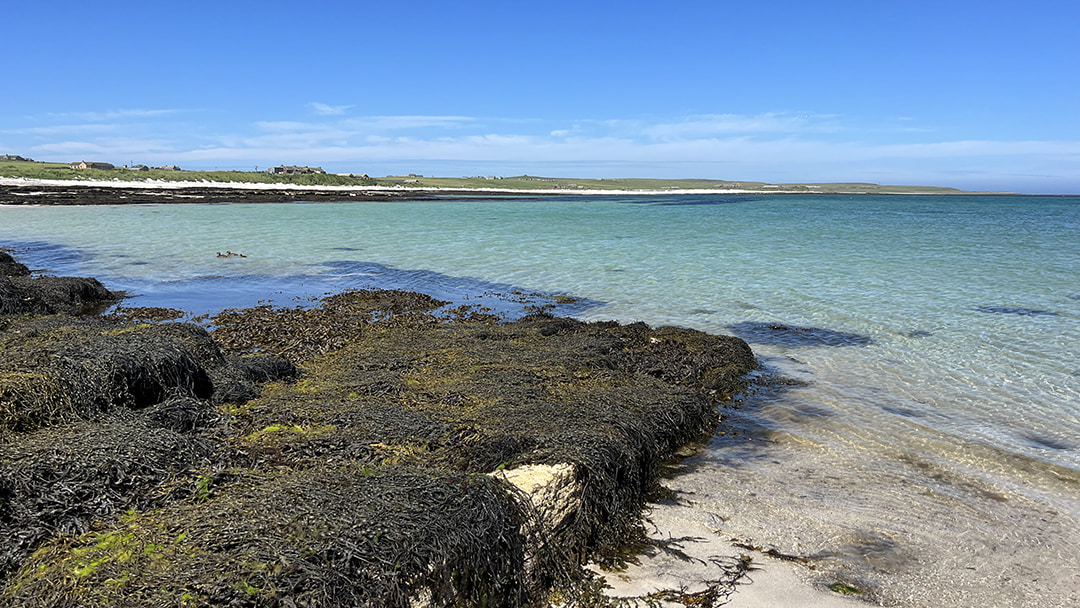
But it feels very different on the ground in Papa Westray where the industrious islanders power on against anything that comes their way, with a community spirit many people I know today living in cities would be deeply envious of. I pass the wee school and post office and think how lucky the people are to live next to two of the most spectacular white sand beaches in Scotland at South Wick and North Wick. By default that for me makes them two of the most spectacular beaches in the world. What a place to live.
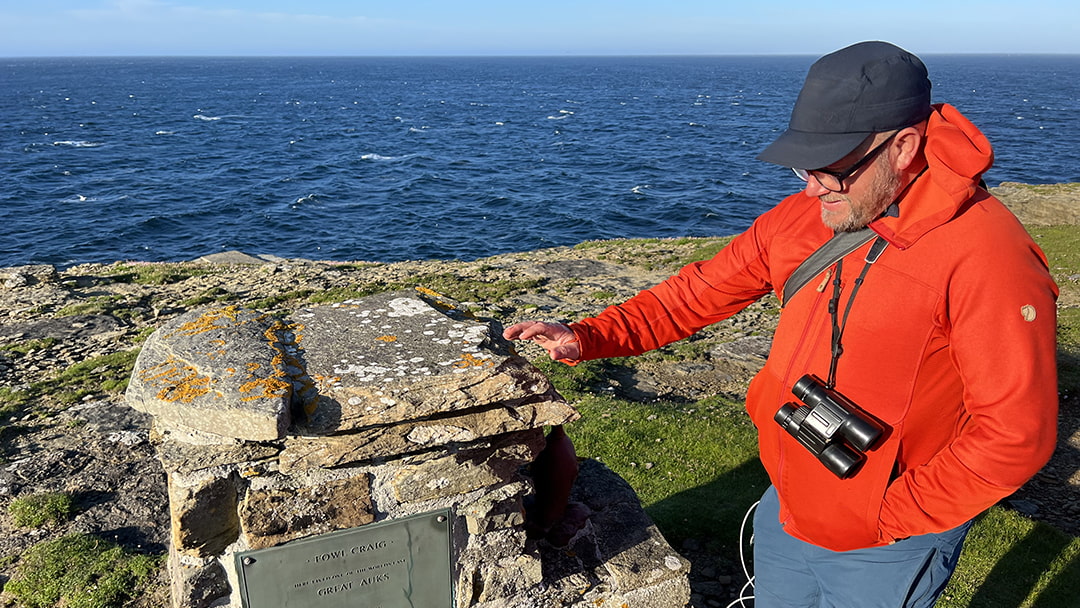
I hook up with another local now. Jonathan is better known as the Papay Ranger. He offers a great service, meeting new arrivals at the airport and taking them for an anecdote and information filled tour of the island’s greatest hits. “There is so much to see on our glorious island,” he smiles. “I often find that people just coming for a day soon realise that they’ve made a huge mistake and should have booked to stay here longer. Papa Westray demands your time.”
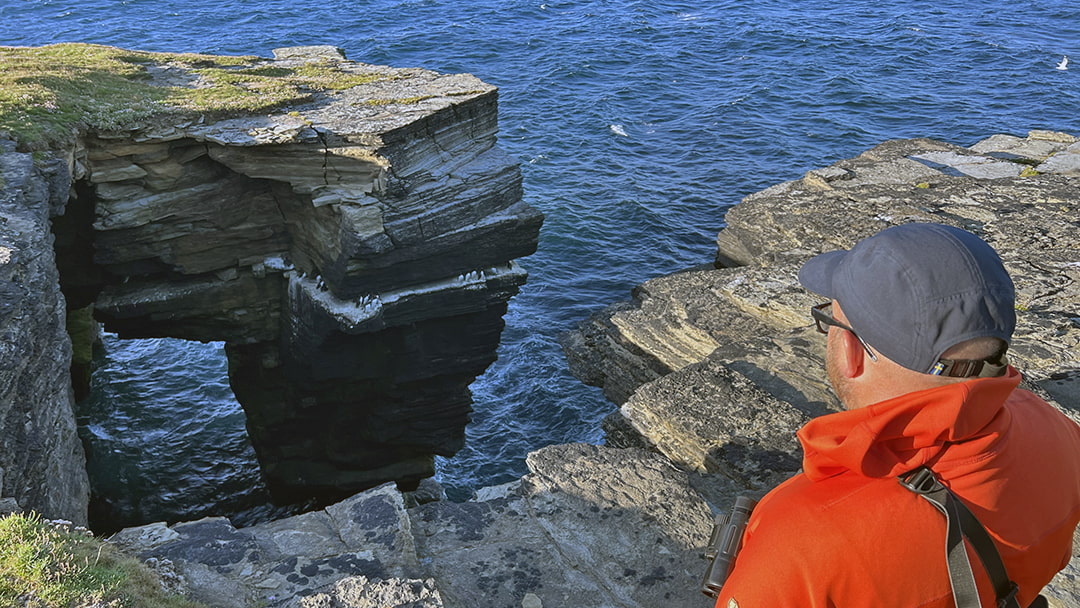
Jonathan couldn’t be more right. I try to make up for my own limited time on Papa Westray joining him for an expert tour of the RSPB North Hill Reserve in the island’s north. This impressive reserve actually protects around a third of Papa Westray. We peer over the cliffs in search of the marine mammals that often parade past, while the skies are painted in with puffins, fulmars and Arctic skuas. A sad note comes when Jonathan shows me the memorial to the last great auk. It was killed, allegedly for a collector, right here on the isle in 1813. Jonathan is part of plans to erect a more apposite memorial.
I’m going to leave you now as I have a date with a Johnsmas party. I’ve only been on Papa Westray for a day and I’m already heading to someone’s garden to join the community around a giant bonfire for a BBQ and drinks. Afterwards they plan to follow a sun that in June refuses to set, all the way around the northern half of the island.
I’d like to join them, but my heart has already agreed with my soul that we’ll be savouring a wee dram down by the Knap Of Howar. We’ll be sweeping back through the millennia on one of the most remarkable islands I’ve ever had the pleasure to visit in my adventures to over 100 countries.
 By Robin McKelvie
By Robin McKelvieRobin McKelvie is an award-winning travel writer and broadcaster who has been published in over 200 magazines and newspapers worldwide.
Pin it!